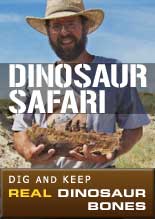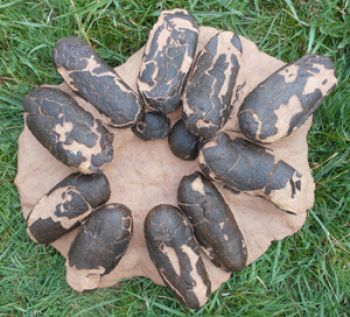
Oviraptor philoceratops is the dinosaur which is believed to have laid these eggs. Oviraptor philoceratops lived during the Late Cretaceous (88-70 million years ago). They were first found by paleontologist Roy Chapman Andrews, in the Gobi Desert, in Mongolia, in 1924, and described by Henry Osborn. Originally Oviraptor eggs were thought to be those of a Protoceratops, which was one of the more abundant species from the area where they were first found. It was therefore assumed that the Oviraptor skeleton found on the nest was there stealing the Protoceratop's eggs. Thus the name Oviraptor ("egg stealer"); the name philoceratops means lover of ceratopsians. It has been determined since, that the Oviraptor laying on the nest was actually a nurturing parent, incubating its own eggs, and not an egg stealer. This was due to finding a near full term embryo in one of the eggs previously thought to belong to Protoceratops. Based on Oviraptor's curved toothless beak it has been determined to be an omnivore. Its diet probably included eggs, insects, meat, seeds, shellfish, and plants. It would have stood about three feet tall, was six feet long, and weighed about 55-75 pounds. Oviraptors were a specialized, bipedal, fast moving group of theropods.
Oviraptor eggs come almost exclusively from the Flaming Cliffs of the Djodokhta Formation of Mongolia, but also are found in the northeast region of Neimongol Autonomous Region of China (an area called Bayan Mandahu). Dinosaur eggs are classified by their own genus and species which is based only on size of the shell, shape, texture, thickness, pore type and pore diversity and has nothing to do with the dinosaur which laid it. This makes it much easier to catergorize and study many types of eggs without needing to make speculative links to a certain type of dinosaur. Identification without a late term embryo contained inside an egg would be nearly impossible. The Genus: Elongatoolithus has been given to Oviraptor eggs.
Scientists have noticed that the thickness of the egg shells of a given species thinned over a period of time. They felt that this may have been due to a change in environments from a humid subtropical to an arid temperate climate. These changes in environment could have limited the egg viability and contributed to the animal's extinction.
The original Oviraptor egg nest was offered for sale, at the Denver Spring Mineral & Fossil Show, for $13,200.
polyresin
18" x 15-1/2" x 4-1/2"
Item 2238
Category: Replicas
Type: Eggs
Phylum: Vertebrates
Class: Dinosaurs
MORE PHOTOS:
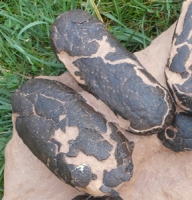
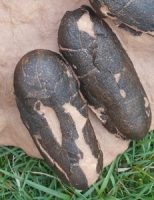
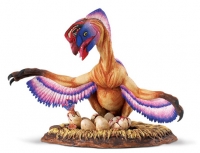

Now Over 1,000 Items!
PrehistoricStore.com offers the largest selection of replica fossils and other fossil-related products anywhere in the world!
Download a Full Catalog (3MB PDF)
OVER 260 PAGES OF REPLICAS AND MORE!
